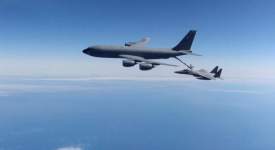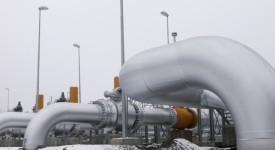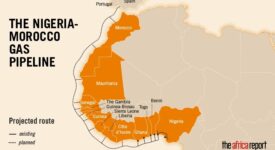Middle East and North Africa (MENA) countries are laggards in terms of trade integration and investment flows. Henry and Springborg and other scholars have pointed out that the MENA region has fallen behind other world regions in the age of globalization, especially emerging markets in Asia, but also in Latin America. This assessment chimes in with the resource curse literature. Economies of resource-abundant countries tend to focus on non-tradables as a result of Dutch disease and an effective appreciation of the exchange rate.
They also maintain political structures and practices that are hampering economic development, such as resource capture by elites, corruption, rent seeking and educational shortcomings. Yet there are some striking differences and also evidence of diversification. Gulf countries such as Saudi Arabia, the United Arab Emirates (UAE) and Qatar have all built up thriving heavy industries in petrochemicals and aluminum. Dubai has pioneered diversification into trade, logistics, services and tourism and has inspired copycat projects in other Gulf countries, but also beyond, in such unlikely places as the Kurdistan Region of Iraq and Morocco.
Morocco has the world’s largest phosphate reserves. It has moved up the value chain by investing in fertilizer production and other chemical industries, as the Gulf countries have done. Also, in the Gulf countries, Lebanon, Morocco and Turkey, financial services have played important roles in their respective economic development and sometimes in their economic penetration of neighboring regions, such as sub-Saharan Africa. The Gulf countries are major players in international finance via their sovereign wealth funds (SWFs), whose assets grew steeply during the oil boom of the 2000s.
Overall, MENA countries’ integration in processes of economic globalization has trailed behind many emerging markets in Asia, but also Latin America. This applies especially to the “bunker states” and “bully praetorian states” of the Arab republics and Iran, less so to Lebanon and the “globalizing monarchies” of the Gulf Cooperation Countries (GCC), Morocco and Jordan and even less to the OECD countries of Israel and Turkey.
As petrochemicals, aluminum and fertilizer industries have been successfully established in the Gulf countries and Morocco, capitalizing on their competitive advantage of cheap feedstock has proved highly efficient (natural gas, naphtha and phosphates). Turkey, in particular, has established a large steel industry that uses scrap metal as feedstock. Logistics and airlines have become a major diversification sector in the Gulf and Turkey. They have helped these countries to open new geographical areas of cooperation in Africa and Asia.
The same is true for Morocco, which has positioned itself as a bridge and facilitator between Africa, Latin America and Europe. Egypt has also banked on logistics with its enhancement of the Suez Canal, which is a major source of foreign exchange and a crucial part of its future development plans. Light manufacturing in food processing, textiles, light chemicals, cars and car supplies plays a major role in Turkey, Morocco and Tunisia. These industries struggle at times with competition from Asia and need to manage their dependence on the import of intermediate goods but in many cases have achieved critical mass with considerable growth rates. This is especially true for Turkey. In Morocco, the scheduled production of electric cars by Chinese BYD could give crucial impetus.
The only country in the MENA that has a prominent presence in the high-tech sector is Israel. The sector has grown since the 1980s when the importance of software increasingly superseded that of hardware. The country can draw on a unique ecosphere of military alumni networks, venture capital, close ties to international capital markets, government-supported R&D and research centers of international companies whose share in total high-tech investments hovers at and above three-quarters. Because of these unique factors, and Israel’s regional isolation, its model cannot be easily replicated, and regional spillovers are unlikely.
Military spending in the MENA is one of the highest in the world considering the size of its national economies. Some MENA countries that belong to the largest arms importers (e.g. Saudi Arabia and the UAE) have built up domestic arms industries that in turn require cooperation with international partners. Turkey and Israel have the most advanced DTIBs and also export arms.
In sum, MENA countries show considerable integration in economic globalization processes in selected countries and key areas, especially the two OECD countries of the region, Turkey and Israel. Limited domestic markets remain an issue that can deter FDI. Regional trade agreements that could have overcome this limitation, such as the Greater Arab Free Trade Area, are few and far between, not meaningful enough and difficult to implement because of political differences.
‘Embeddedness of the MENA in Economic Globalization Processes’ – Working Paper by Eckart Woertz and Irene Martínez – Barcelona Centre for International Affairs / CIDOB.







